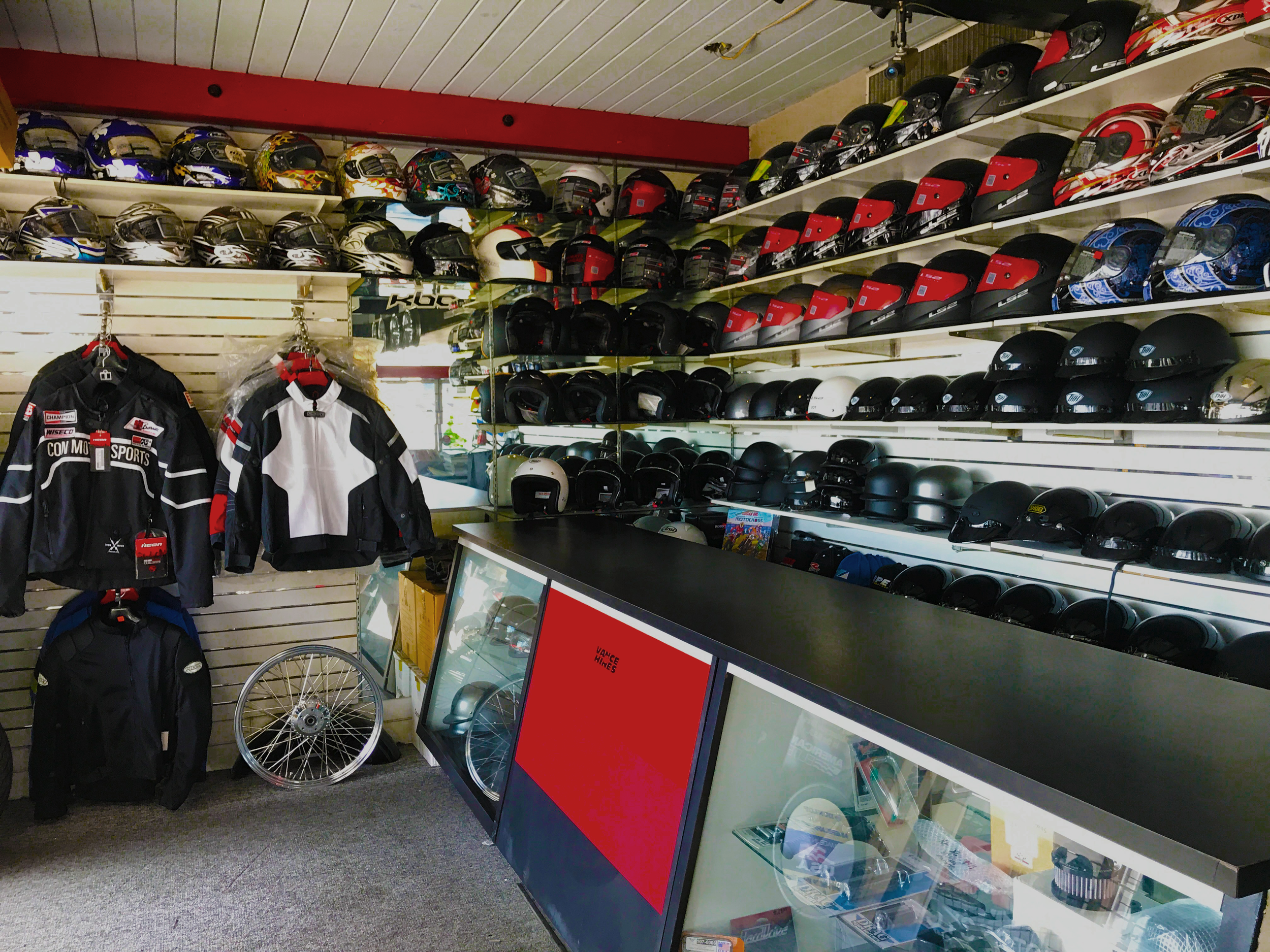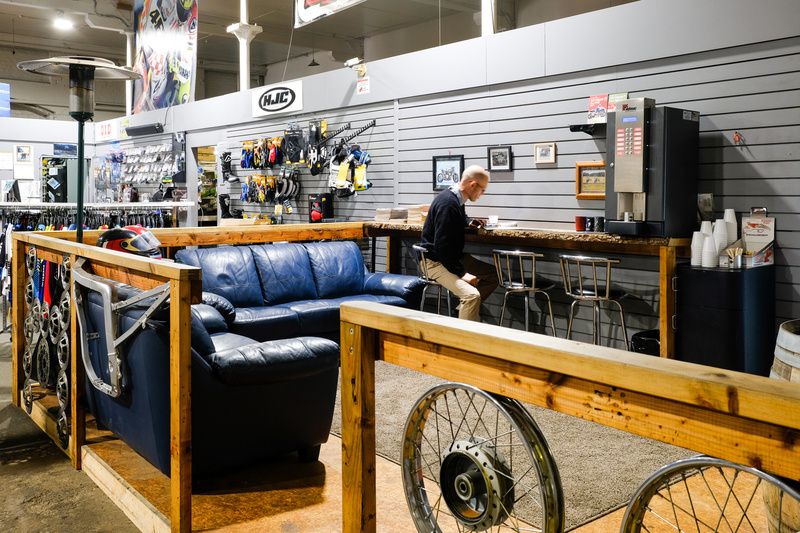A Comprehensive Check Out Motorcycle Components: What Every Biker Should Know
A thorough understanding of bike parts is not merely advantageous however vital for any cyclist intending to optimize performance and safety. Each part, from the engine's detailed workings to the reliability of brake systems, plays a crucial function in the general experience and performance of the bike. Past just knowing what these parts do, it is important to appreciate exactly how they engage and support one another. This interconnectedness can make the distinction between a smooth ride and unanticipated difficulties. What ins and outs exist within this mechanical harmony that every rider should grasp?
Comprehending the Engine
The engine, commonly considered as the heart of a motorcycle, is a complex assembly of parts that operate in consistency to transform fuel right into activity. At its core, the engine's primary function includes the burning process, where air and gas mix and stir up within the cylinders, resulting in controlled surges that drive the pistons. These pistons move up and down, transforming chemical power into power, which ultimately transforms the crankshaft, inevitably powering the bike.

Recognizing the ins and outs of a motorbike engine is crucial for riders and fanatics alike. It not only offers understanding into exactly how bikes attain their remarkable power and speed yet additionally help in efficient upkeep and troubleshooting, guaranteeing longevity and integrity when traveling.
Suspension Systems
While the engine powers the motorcycle, the shock absorber plays a crucial duty in making sure a regulated and smooth experience. The suspension system is accountable for absorbing shocks from the roadway surface, preserving tire call, and supplying stability throughout cornering and stopping. It comprises 2 major components: the front forks and the back shock absorbers.
Front forks are normally telescopic, dampening and consisting of a spring system. The springtime prolongs and compresses to take in bumps, while the dampening system controls the motion to stop extreme jumping. This combination guarantees the front wheel stays in contact with the road, offering remarkable handling and comfort.
The rear suspension, commonly a monoshock or twin-shock arrangement, functions in a similar way to the front suspension but is customized to sustain the bike's weight and cyclist - moto parts nz. It handles rear wheel activity, adding to the bike's general balance and responsiveness
Shock absorber can be flexible, allowing cyclists to adjust preload, compression, and rebound setups according to individual preferences and riding conditions. This adjustability enhances performance by optimizing the bike's communication with diverse terrains. In recap, an efficient suspension system is crucial for biker comfort, safety, and the bike's handling expertise.
Brake Elements
Quiting power is an essential aspect of motorbike safety and security, and it rests on the performance of the brake parts. The primary elements of a motorcycle's stopping system consist of the brake pads, calipers, rotors, and master cyndrical tube. motorcycle check these guys out shop. Each of these elements plays a vital duty in making sure effective braking performance
Brake pads are necessary as they develop the needed friction against the blades to reduce down or quit the motorbike. Built from materials such as sintered metal or natural compounds, the option of brake pad material substantially affects performance and durability. Calipers, real estate the brake pads, use stress to the pads when the brake bar is involved, facilitating contact with the rotors.
The rotors, typically made from stainless-steel or cast iron, are motorcycle mechanic near me mounted to the wheels and function as the surface versus which the brake pads press. Their design, including size and thickness, influences heat dissipation and stopping power. The master cylinder, attached to the brake lever, produces hydraulic stress transmitted with brake lines to the calipers, ensuring regular advice braking force.
Routine upkeep and inspection of these components are crucial for optimum efficiency, avoiding wear and making certain motorcyclist safety when driving.
Tire Basics
Beyond preserving durable stopping systems, making certain ideal tire performance is similarly significant for bike safety and efficiency. Tires are the single get in touch with point in between the road and the bike, making their problem critical in dealing with, stability, and overall adventure high quality.

Additionally, think about the tire's age. Rubber compounds break down in time, even if step shows up sufficient. Inspect the sidewall for the DOT (Division of Transport) code to identify the tire's age. Usually, substitute is advised every five years, despite wear. Spending attention in these tire basics not just maximizes performance yet also considerably boosts riding security.
Electrical Solutions
In the realm of motorbike upkeep, the electric system plays a critical role in making sure trustworthy efficiency and rider security. This elaborate network incorporates important components such as the battery, alternator, starter electric motor, and circuitry harness. Each component is vital for the smooth procedure of the motorbike, from ignition to illumination and interaction with various sensing units.
The battery functions as the heart of the electric system, providing the necessary power to start the engine and run accessories. Regularly inspecting the battery's voltage and terminals for rust is vital to stop unanticipated failures. The generator, on the other hand, recharges the battery while the engine is running, ensuring a constant power supply.
The starter motor is accountable for launching engine procedure, transforming electrical power into mechanical energy. To keep it, cyclists ought to pay focus to any kind of unusual noises or difficulties during start-up. At the same time, the wiring harness offers as the automobile's nerves, connecting all electrical elements. Making certain that the wires are intact and cost-free from damage is vital for avoiding brief circuits and guaranteeing functionality.
Final Thought

Stopping power is an essential element of bike safety, and it pivots on the performance of the brake parts. The primary elements of a motorcycle's stopping system include the brake pads, calipers, blades, and master cylinder.Brake pads are necessary as they develop the essential rubbing against the rotors to reduce down or quit the motorcycle.Beyond keeping durable stopping systems, ensuring optimum tire efficiency is just as significant for motorbike safety and security and effectiveness.In the realm of motorcycle maintenance, the electric system plays a critical role in making sure dependable efficiency and cyclist safety.